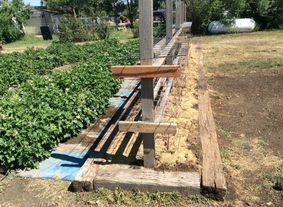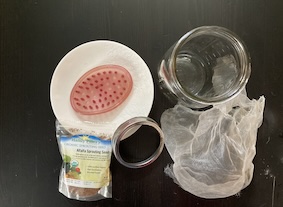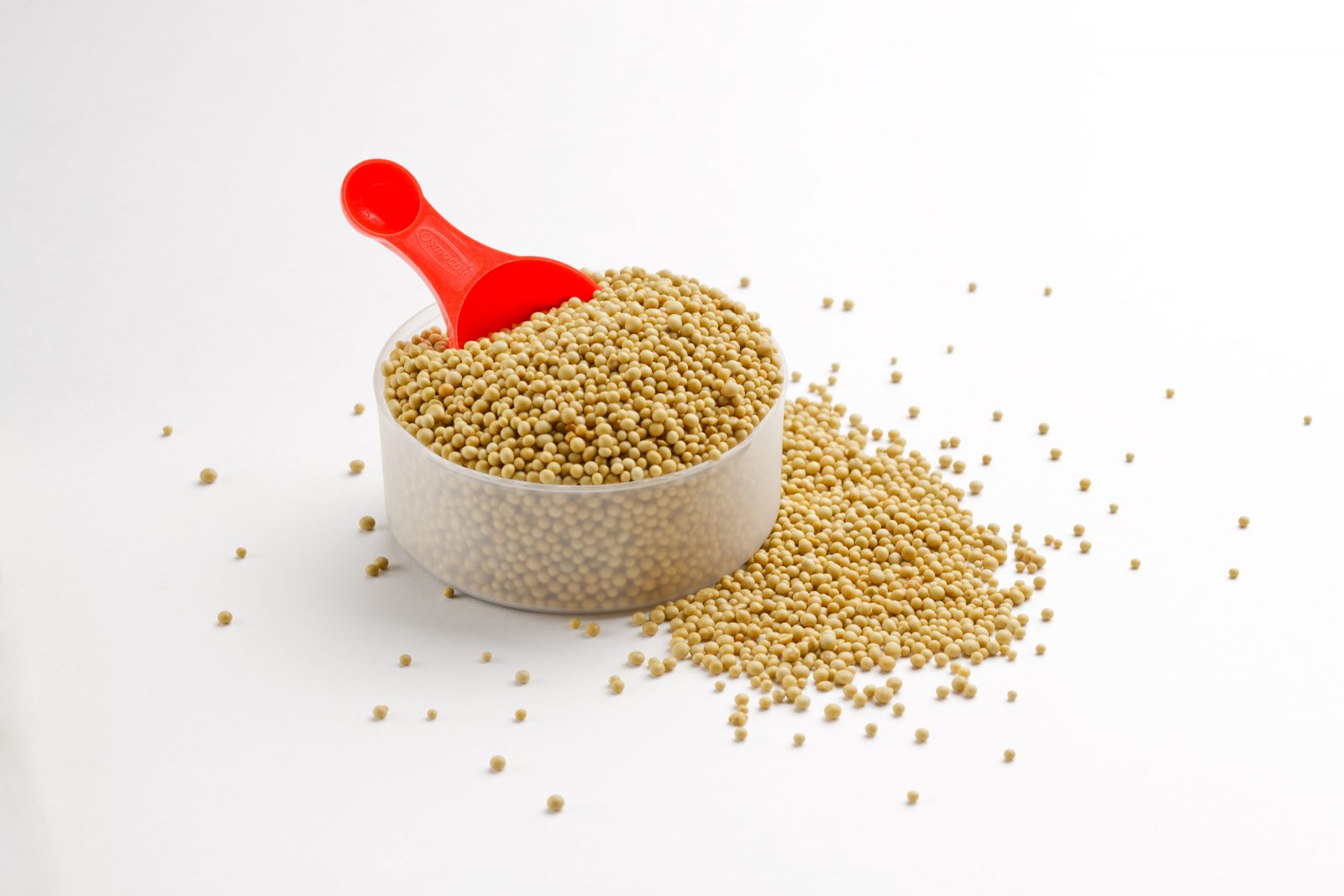Grow Raspberries on a Trellis
Views: 1676

Grow raspberries on a trellis system and you’ll never look back. That’s basically what my brother Craig said about his favorite new bramblebush growing method. Both Craig and I remember picking raspberries at home when we were kids. With the fruits coming ripe in late July and August, we’d have to dress in the heaviest duck cloth-type clothing whenever we were tasked with harvesting. And the long sleeves and jeans did little to save our arms and legs from the bushes’ thorns.
When Craig bought his house in South Dakota it came with a patch of raspberries around its foundation. That was a great way to prevent someone from breaking in the house, but a horrible location for harvesting a crop of berries. He decided to relocate the raspberries to a more accessible area of his garden, and chose to set them up on a trellis. A trellis would wrangle the willy nilly nature of the canes and keep them from splaying outward. This would also make it easier to pick the berries.
Here’s how he did it.
Building a Raspberry Trellis
- A trellis needs a base from which you can string lines to support the fruit-laden canes. Craig sunk five wooden 4 in. x 4 in. posts about 2 to 3 ft. into the ground. The posts are about 6 ft. apart.
- Next he stabilized the posts by connecting them with horizontally placed 6-ft long 2 in. x 4 in. boards. These are attached to either side of the sunken posts at a height of about 2 ft. off the ground. He then placed 3 ft. long 2 in. x 4 in. cross boards on each post at the height of these connecting boards.
- Most raspberry trellises you see have lengths of wire going from post to post to help support the growing canes. Craig instead used 6-ft. lengths of a 3 ft. wide section of cattle fence panel. You can see in the photo that he slid the panel down the posts to initially secure it. This creates the cane supports for his raspberry trellis.
- Craig then repeats steps 2 and 3 to create a second tier of supports about 2 ft. above the first one. You can see in the photo that the posts are plenty tall enough to add one of even two more tiers of support.
How It Works
Craig created a small raised bed around the trellis using railroad ties. He then transplanted the canes underneath that cattle panel. As the canes grew upward, he guided them up through the grids.
Did Craig succeed with his raspberry trellis? Since this was the first year after transplanting small canes, Craig didn’t get a measurable harvest. The canes will be better established and thus ready to produce better next season. But he says the canes are growing nicely and neatly. And he also says he’ll never had to dress in duck cloth to harvest raspberries ever again. What a relief!
Meet Ellen Wells
When you’re raised on a farm, you can’t help but know a thing or two about gardening. Ellen Wells is our expert on edible gardening.…







